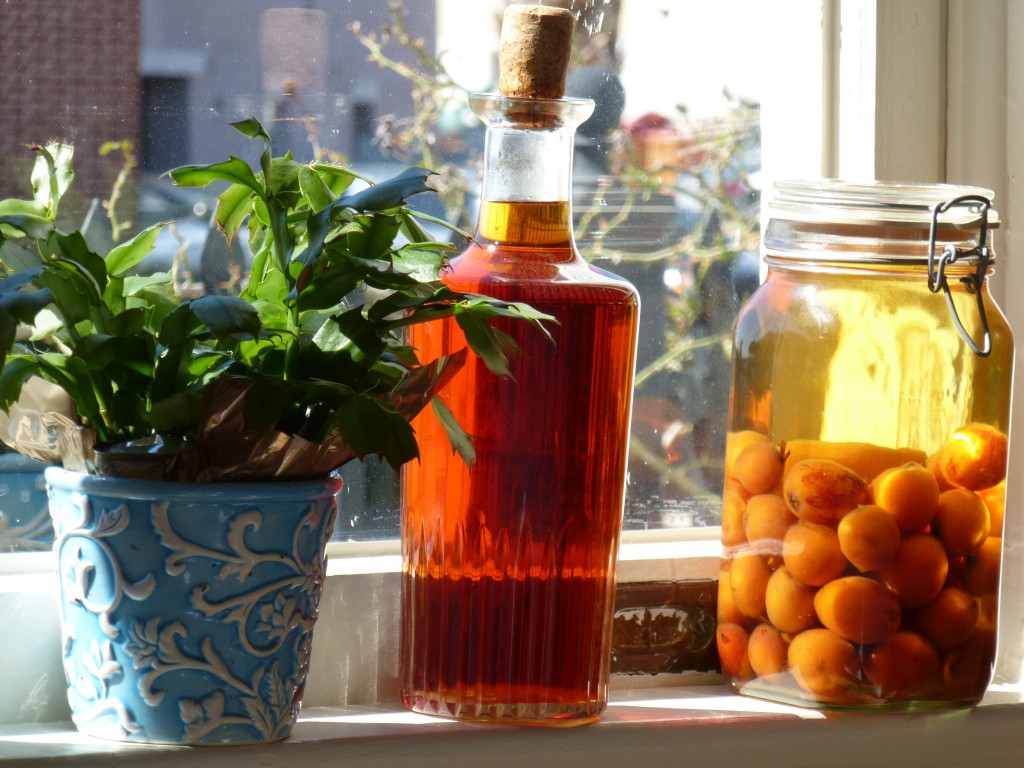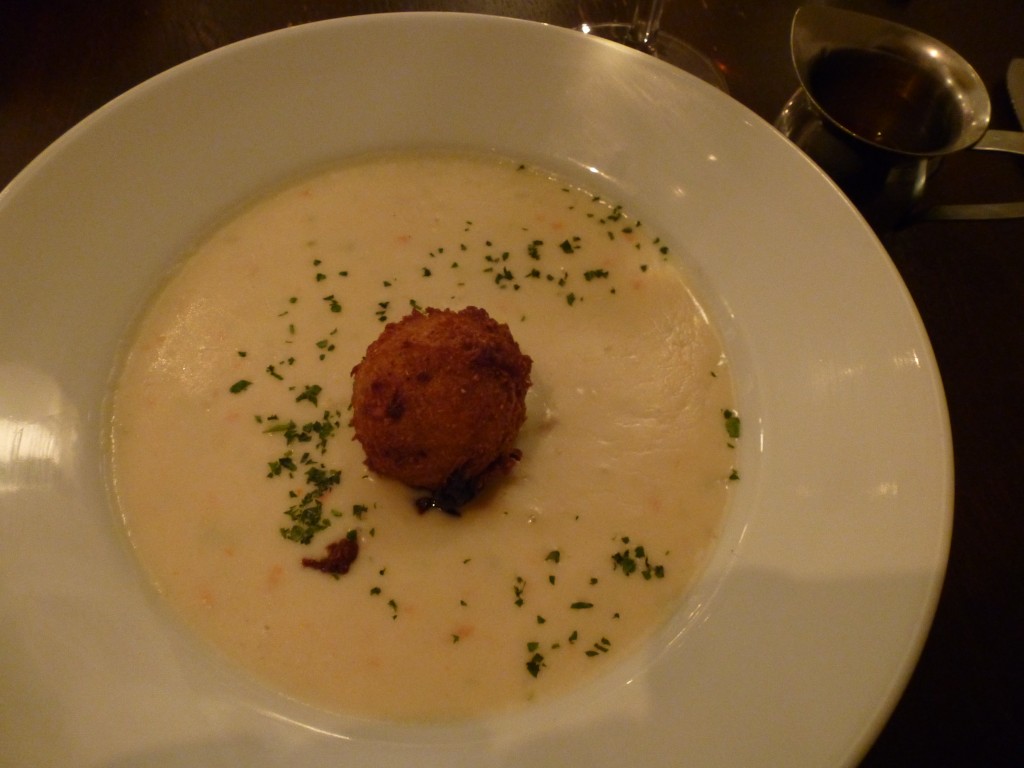Laura’s Luscious Loquat Liqueur
 I had the opportunity to drink a number of thoroughly delightful tipples while in Charleston, South Carolina, and one of the best things I tasted was homemade. If you go to Charleston, and I certainly recommend that you do, give Laura Wichmann Hipp of Charleston Tea Party Private Tours a call. The tour isn’t inexpensive at $100 per person, but it’s worth every penny. She gives you wonderfully personalized, idiosyncratic insights into Charleston that only a lifelong resident could. How else would I have learned that “north side manners” dictate that you don’t linger at the windows on the north side of your home? If your neighbor’s yard and piazza (porch) are on the south side, Mrs. Hipp explained, staring out your northern windows infringes on your neighbor’s privacy.
I had the opportunity to drink a number of thoroughly delightful tipples while in Charleston, South Carolina, and one of the best things I tasted was homemade. If you go to Charleston, and I certainly recommend that you do, give Laura Wichmann Hipp of Charleston Tea Party Private Tours a call. The tour isn’t inexpensive at $100 per person, but it’s worth every penny. She gives you wonderfully personalized, idiosyncratic insights into Charleston that only a lifelong resident could. How else would I have learned that “north side manners” dictate that you don’t linger at the windows on the north side of your home? If your neighbor’s yard and piazza (porch) are on the south side, Mrs. Hipp explained, staring out your northern windows infringes on your neighbor’s privacy.
But more important for the purposes of this blog, Mrs. Hipp also makes her own unique Loquat Liqueur by steeping loquats from her garden in vodka (see right). Now what the heck is a loquat? I thought it might be related to a kumquat, that tiny citrus fruit one eats whole, but the similar names are just a coincidence. Loquats are actually a variety of small stone fruit, which became immediately clear to me when I took a whiff of the liqueur.
It smelled to me like Prunelle, a marvelous plum-based French spirit with a distinctive amaretto aroma shared by the Loquat Liqueur. It tasted floral, sweet and lush, but it wasn’t just a syrup bomb — it had balance, ending with a note of spicy citrus peel. I loved it neat, but it also tasted delicious mixed with some warm apple cider.
For the moment, the only way to obtain the Loquat Liqueur is to head down to Laura’s well-kept Charleston home and pick some up yourself. But Mrs. Hipp has been in off-and-on talks with the owner of Firefly, a local distillery best-known for its Sweet Tea Vodka (mix it with lemonade for a mean Arnold Palmer). The distiller might just be interested in producing this wonderfully unusual liqueur, which would be great news for those of us not fortunate enough to call regularly on Mrs. Hipp.
Until then, I’m glad I brought a bottle home to Chicago, where loquats — in liqueur form or otherwise — are decidedly hard to come by. Every time I take a sip, I’ll be reminded of one of my loveliest days in Charleston.






